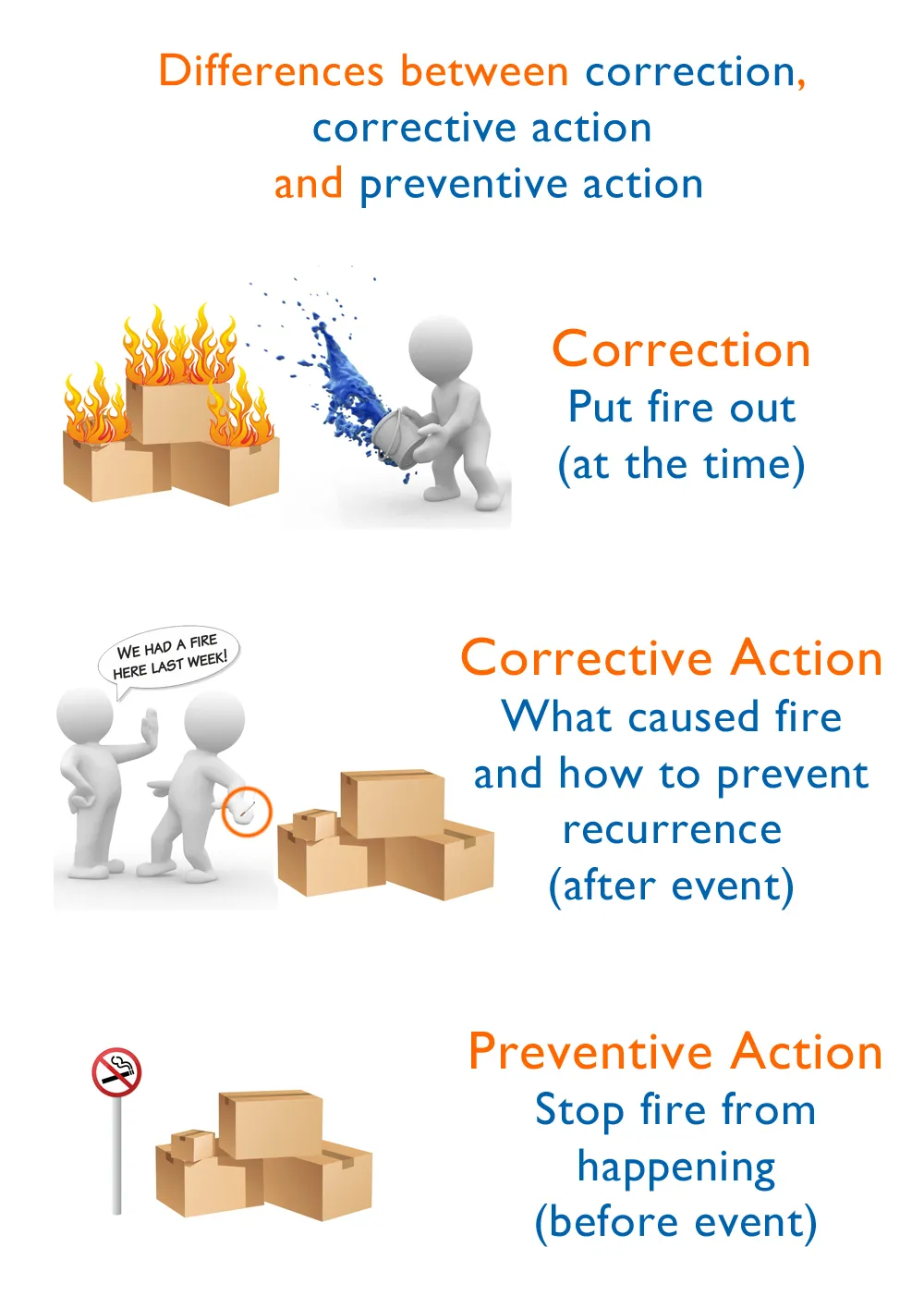A common question we get asked during our training courses is what is the difference between correction, corrective action and preventive action? To help our delegates understand we draw the following diagram

A common question we get asked during our training courses is what is the difference between correction, corrective action and preventive action? To help our delegates understand we draw the following diagram

You may also be interested in
By subscribing, you consent to receive marketing emails from Batalas. Your data will not be forwarded to any third parties, and you can unsubscribe anytime.
By clicking ‘Sign up’ you agree to the Terms and Conditions and Privacy Policy.

With over 60 years experience, our expert team have a wealth of knowledge to share. From auditing tips to FAQ’s, we have a range of resources to support you.
Are you a new auditor looking for ISO training advice? Or do you want to build on existing auditing skills to boost your career?
Whatever your need, our experienced and knowledgeable Batalas team can guide you on the right training path to help you reach your professional goals.
Batalas Ltd is a limited company registered in England and Wales. Registered number: 3736166. Registered office: Victoria House, 2 Grove Road, Fareham, PO16 7TE
© 2023 Batalas ltd, All Rights Reserved. Designed by Damteq®
Return
ISO 9001:2015 Foundation QMS
CQI | IRCA
An entry-level course which teaches an understanding of ISO 9001 QMS.
ISO 9001:2015 Internal Auditor QMS
CQI | IRCA
Discover how to conduct, report and follow up on an internal audit.
ISO 9001:2015 Lead Auditor
CQI | IRCA
Gain the knowledge and skills to manage internal, third-party, and supplier audits.
AS9100:2016 Rev D Introduction
A short online course that provides a basic overview of AS9100:2016 Rev D.
AS9100:2016 Rev D Foundation
CQI | IRCA
Discover the requirements of AS9100 and a Management System.
AS9100:2016 Rev D Internal Auditor
CQI | IRCA
Understand auditor responsibilities and how to conduct an internal audit.
AS9100:2016 Rev D Lead Auditor
CQI | IRCA
For new or existing auditors who wish to conduct internal, external and supplier audits.
MD-QMS ISO 13485:2016 Foundation
CQI | IRCA
Achieve an understanding of ISO 13485 and a Management System.
ISO 13485:2016 Internal Auditor
CQI | IRCA
Gain the knowledge and skills to conduct internal audits of a management system.
ISO 13485:2016 Lead Auditor
CQI | IRCA
Learn how to lead audits within an organisation or for third parties and suppliers.
ISO/IEC 27001:2022 Foundation
CQI | IRCA
Perfect for new auditors wanting to learn about ISO 27001 ISMS.
ISO/IEC 27001:2022 Internal Auditor
CQI | IRCA
Conduct internal audits of an Information Security Management System.
ISO/IEC 27001:2022 Lead Auditor
CQI | IRCA
Learn how to manage internal audits, plus third parties and suppliers.
ISO/IEC 27001:2022 Auditor Conversion
CQI | IRCA
Designed for existing lead auditors who want to audit against ISO 27001 ISMS.
ISO 14001:2015 Foundation
CQI | IRCA
Gain knowledge of an Environmental Management System.
ISO 14001:2015 Internal Auditor
CQI | IRCA
Learn how to carry out an internal audit against ISO 14001.
ISO 14001:2015 Auditor Conversion
CQI | IRCA
Perfect for existing lead auditors who want to learn ISO 14001 to expand their knowledge.
ISO 45001:2018 Introduction
Gain a basic understanding of ISO 45001 with this short online course.
ISO 45001:2018 Foundation
CQI | IRCA
Beginners course that teaches the requirements of ISO 45001 OHSAS.
ISO 45001:2018 Auditor Conversion
CQI | IRCA
For current lead auditors who wish to increase their knowledge by learning ISO 45001.
ISO 9001:2015 Management Overview
Understand the new responsibilities placed on managers in ISO 9001:2015.
Supplier Auditor Course
Learn how to conduct audits of new and existing suppliers effectively.
ISO 9001:2015 Risk-Based Thinking
Improve your knowledge and skills for effective risk-based thinking.
Audit Skills Workshop
Bring your team together with a fun and energetic team-building session.
Return
Audit Support
We have a wealth of experience working with ISO management systems and can assist auditors who require support.
Return
Resources
The latest news, course updates and video resources all in one place. Looking for help? Check out our frequently asked questions.
Return

Founded in 1962, we have over 60 years’ experience providing specialist consultancy and training in ISO/AS Management Systems.
Alternatively, use our Course Selector to find the perfect course for you: